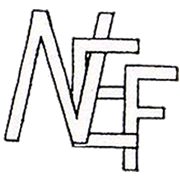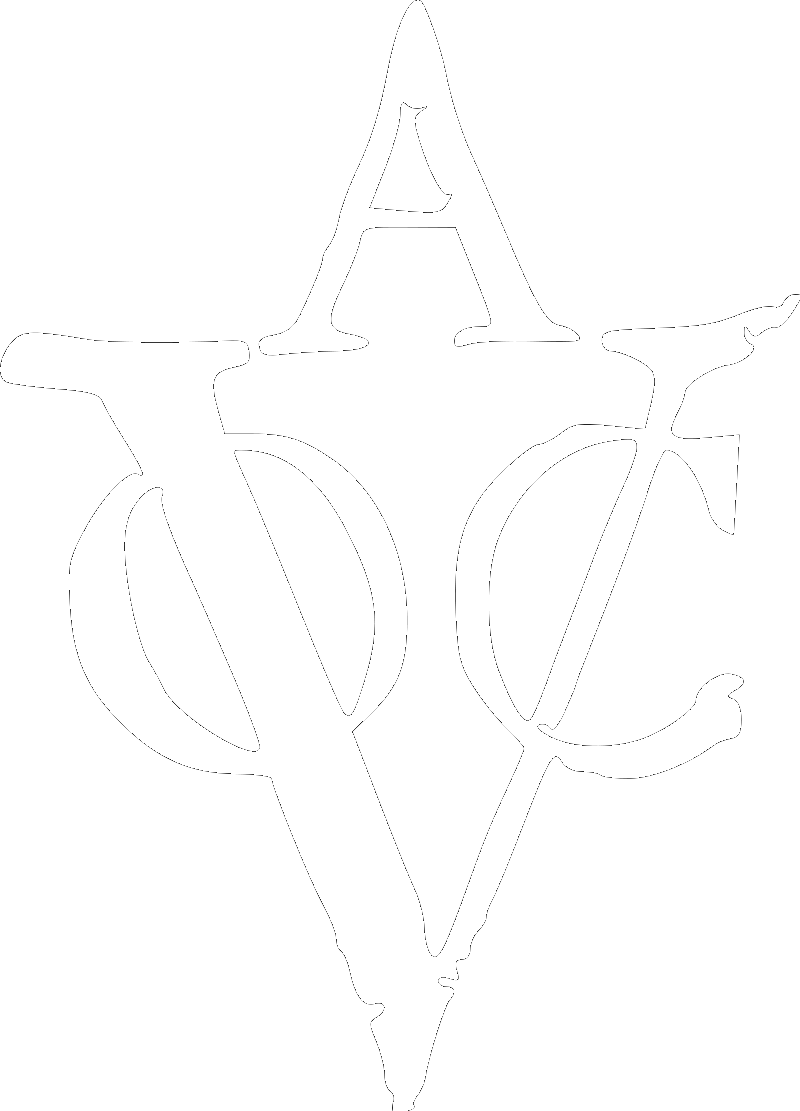John Mutsaers
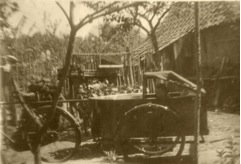 I was born in Eindhoven in Noord Brabant in 1942. I am the only son among five daughters, three older and two younger than I. Being a family with only six children was small in our neighborhood, twelve and fourteen were more common. My father was a bus driver for the Statsbusdienst and my mum, like most mothers at the time, a housewife. Dad was regarded as “Mr fix it” by the neighbours; there seemed to be no end to his talent. He made everything from rabbit hutches to furniture, he even made a bike trailer/pram to take us around.
I was born in Eindhoven in Noord Brabant in 1942. I am the only son among five daughters, three older and two younger than I. Being a family with only six children was small in our neighborhood, twelve and fourteen were more common. My father was a bus driver for the Statsbusdienst and my mum, like most mothers at the time, a housewife. Dad was regarded as “Mr fix it” by the neighbours; there seemed to be no end to his talent. He made everything from rabbit hutches to furniture, he even made a bike trailer/pram to take us around.
I’m sure that his handiness, inventive mature and his confidence that he could do most things he put his mind to are part of what makes me an artist today. Coupled with the “Mutsaers” artistic gene pool and my mother’s family of painting brothers it seemed natural I would become am artist.
My childhood memory of the early post war years are wonderful but I’m sure that it was a different story for my parents. I remember their struggle in various ways: the small pieces of meat which were served with our main daily meal but only once a week and when we had eggs they were halved so that we all got a share. I also remember the discussions and fun we had around the table but never during the meal. “Esse nie kletsen” (?) was the little catchphrase my father used whenever anyone spoke during this sacrosanct meal time. I think the phrase was German for – eat and shut up.
I remember my father as an adventurist who did all sorts of daring things. When Holland was invaded by the Germans they confiscated all motor vehicles including busses so my dad buried his in a nearby field. Exhumed after the war this was the only bus back in service and dad the only driver. He and my mother also worked with the Dutch underground movement so it’s not hard to imagine that the post war years would have been a little dull and this combined with limited infrastructure and services, leaving Holland would have seemed an attractive alternative. The exact reason why we migrated to Australia is uncertain in my mind. Whenever my father was asked this question he always said that they did it for the sake of the kids and their futures
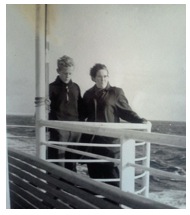 On a cold January day in 1956 we left the docks in Rotterdam, sailed past the Hoek van Holland on board the Zuiderkrius destined for a country I had heard about because one of my classmates migrated there a few months earlier. Life on board was an adventure made more interesting by the segregation of men and women. My mother and sisters shared a cabin with another lady while I was in a cabin with my dad and another man with his three sons. I had never spent so much time with my father before as he always seemed to be working.
On a cold January day in 1956 we left the docks in Rotterdam, sailed past the Hoek van Holland on board the Zuiderkrius destined for a country I had heard about because one of my classmates migrated there a few months earlier. Life on board was an adventure made more interesting by the segregation of men and women. My mother and sisters shared a cabin with another lady while I was in a cabin with my dad and another man with his three sons. I had never spent so much time with my father before as he always seemed to be working.
We arrived at Station Pier on the 28th of February 1956, eight weeks before my fourteenth birthday, then travellled by train to the Victorian township of Traralgon. Members of my family still reside in this town today.
Leavings Holland was a huge adventure for me and not for a moment did I mourn or even think about such things as losing my heritage or culture. Australian in 1956 had an assimilation policy which put pressure on migrants to become “Australian” as soon as possible. My family took this very seriously and within a short time only spoke English, even at home. I now regret losing most of my Dutch language and have in recent years tried to relearn it.
My education in Holland had been abysmal and I was held back from graduating to the next grade at least twice. Painting, drawing and clowning around are all subjects I would have excelled at but unfortunately they were not part of the curriculum. Even in Kluiter school (kindergarten) I was very good at drawing and I once did a drawing of a boy turning on a water tap which was hung on the classroom wall. This was not the normal thing at that time, in fact I don’t remember anyone else’s work ever being exhibited like that. Many years later I realized what all the fuss was about. Apparently as a four year old I had drawn the boy’s body complete with head, torso legs and arms, which seemingly is unusual for a child that age. I can recall the drawing well enough to recreate it today.
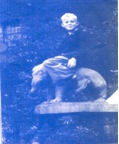 In 1954 I spent a year at a boarding school in the south of Limburg with the idea of breaking my habitual fooling around and disruption of the classroom. The school was awful, the teachers and staff unfriendly and downright cruel. l constantly complained in my letters home but they were either censored or my parents ignored my pleas. One day my mum and dad unexpectedly came to visit and saw how bad it really was and took me home that very day.
In 1954 I spent a year at a boarding school in the south of Limburg with the idea of breaking my habitual fooling around and disruption of the classroom. The school was awful, the teachers and staff unfriendly and downright cruel. l constantly complained in my letters home but they were either censored or my parents ignored my pleas. One day my mum and dad unexpectedly came to visit and saw how bad it really was and took me home that very day.
I now have a Masters Degree in Art Therapy and my regret is that my folks were not alive to see this achievement.
In Australia I was required by law to attend school until I was 14. I left school the day of my fourteenth birthday. The need to contribute to the family coffers coupled with my parents belief that I would most likely not succeed in anything requiring an education made this a good idea. Initially I started work with a panel beater then got a job as a jockey and horse trainer. I even drove a tow truck without a licence at the age of sixteen.
In 1960 I started work as an assistant to a Land Surveyor. This was an another turning point in my life considering I only got the job because my parents were cleaners at the office of the surveyor who needed a young lad to help him peg out a big new subdivision. Originally the job was to last only for the duration of the project but my new boss liked me and offered me a permanent position providing I was prepared to go to night school. I was now engaged in the dreaded realm of education but luckily I met two young men who were to become my life long friends. John and Peter were interested in art but more importantly they loved and valued education. Strange company for a boy who hated school but their influence made the next chapter in my life another exciting journey. Both John and Peter went on to gain University Degrees and worked on important jobs. However, I stayed with land surveying until 1986 but it never became the driving force in my life because art was my passion.
When I was a young boy in Holland my cousin Frank Mutsaers who lived in Tilburg visited our home in Eindhoven regularly. He was my hero because he was a very good artist and on those occasions he would always make the time to look at my drawings and give me tips and encouragement. Frank, his wife and three children migrated to Australia five years earlier than us and was our sponsor to migrate. Frank went on to become a well known and respected Australian artist.
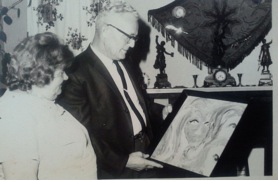 Those early years living in Traralgon are paramount in my journey into art. I joined a local group of artists who encouraged me to exhibit my work and at the age of sixteen I won my first prize at the Traralgon Agricultural Show art competition. The prize was ten shillings. The following year I entered a painting in the Herald Sun outdoor art competition, which was part of the Moomba Festival held in the Fitzroy gardens in Melbourne. It was an awful painting inspired by artists who paint with pallet knives, it didn’t win anything.
Those early years living in Traralgon are paramount in my journey into art. I joined a local group of artists who encouraged me to exhibit my work and at the age of sixteen I won my first prize at the Traralgon Agricultural Show art competition. The prize was ten shillings. The following year I entered a painting in the Herald Sun outdoor art competition, which was part of the Moomba Festival held in the Fitzroy gardens in Melbourne. It was an awful painting inspired by artists who paint with pallet knives, it didn’t win anything.
I never really liked the public competitions nor the work in getting paintings ready for them. Instead I concentrated on exhibitions in galleries and my studio. To date I have held 37 solo exhibitions including a very successful show in London. I don’t really agree with judging art and over the past ten years developed a strong philosophy against it; art is what it is; you either like or you don’t like it. I even gave up judging art shows which had become a substantial part of my art career. There are clearly good and bad pictures but i worry about how much that judgment depends on a judge’s personal taste? It wouldn’t be the first time a badly reviewed work later turns up as a masterpiece? This is precisely what happened to Vincent van Gogh.
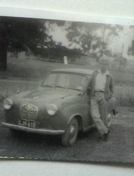 Prior to leaving surveying I continued to paint in the evenings and weekends and when I got my first car I was able to study art at Technical School in a neighboring town.
Prior to leaving surveying I continued to paint in the evenings and weekends and when I got my first car I was able to study art at Technical School in a neighboring town.
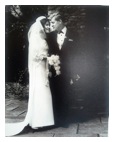 I did a couple of live-in summer schools at the National Gallery of Victoria with Clifton Pugh and learned many valuable techniques and inspiring ways of engaging in art. The tonal painter John Balmain taught me how to paint light and was my mentor for many years.
I did a couple of live-in summer schools at the National Gallery of Victoria with Clifton Pugh and learned many valuable techniques and inspiring ways of engaging in art. The tonal painter John Balmain taught me how to paint light and was my mentor for many years.
In 1964 I met Mary and we married on the 9th of September 1967
Mary was born in Dublin, an only child of migrants who came to Australia to work on the Hydro Electric scheme at Bronty Park in Tasmania. Later they moved to Melbourne and I first met her at a St. Patrick’s ball in the old township of Yallourn. I have to say that I fell in love with her the moment I saw her. She was vivacious, highly intelligent and very engaging; characteristics she still possess today. Mary continues to be a positive influence on my work. With Mary’s support I continued to work in spare room studios in our home until the arrival of our children when I moved out to work in the shed.
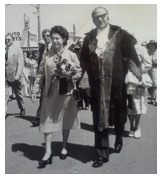 While our first two children were quite young we purchased a small seven acre farm outside Moe which had an old milking shed just waiting to be converted into a studio. That was in 1971 and we lived there for forty one years until my beautiful studio was destroyed by fire.
While our first two children were quite young we purchased a small seven acre farm outside Moe which had an old milking shed just waiting to be converted into a studio. That was in 1971 and we lived there for forty one years until my beautiful studio was destroyed by fire.
In 1979 Princess Margaret made a visit to our town and the Mayor of Moe commissioned me to paint a local scene of the surrounding district as a gift for her. Unfortunately, since the fire I no longer have a photograph of the painting nor the original letter of thanks which came from the Princess.
Since 1986 I worked as a full time professional artist also to make extra money I taught painting and studio techniques to local aspiring artists. At one stage I taught fourteen classes a week. This was detrimental to my own painting career and I eventually brought this down to five classes.
In 2000 a local school asked me to work with a young student who had a severe antisocial problem but loved art. I worked with that boy for about a year. He did well and I discovered the relevance of art in everyday lives. I enrolled at university and over the next five years completed a Masters in Creative Art Therapy. This achievement set me on another course of discovery and in a short time I set up a special studio for young people who were disengaged from society, taking drugs and not attending school. I have retired from this venture but it is still operating with two very talented Art Therapists working with local young people. My own philosophy about making art changed as a result of my studies and rather than painting representional images I now explore ideas conserned with my personal philosophies, social commentary and such universal themes as freedom, equal rights, loss and migration.
2011 marked my 25th anniversary as a professional artist. In 2008 I was selected by the Australian Trade Commission to exhibit in Shanghai.
Although painting is my major discipline my first international success was the sale of a copper and iron sculpture based on C J Dennis’ poem, “The Sentimental Bloke,” which was sold in New York in 1994. My six 2.5 ton stone and steel sculptures, “Forks ‘n’ Spuds,” were featured for two months on the banks of the Yarra river and around Federation Square Melbourne during 2008. The sculptures were my artistic response to the United Nations’ call for an end to world hunger. The sculptures are now permanently placed beside the Princess Highway near Trafalgar, Victoria.
I’m still a clown albeit with a little more life experience.
My favorite hobby is thinking!
Collections:
My work is represented in public, corporate, and private collections around the world, including Holland, England, Ireland, USA, China, Canada and Australia:
- The late HRH Princess Margaret, UK,
- Brigadier General Charles Duke, USA (astronaut, Apollo 16)
- Lisa Gerrard, Australia (composer)
- La Trobe Regional Gallery Morwell, Vic,
- Bega Regional Gallery NSW,
- Shanghai Electric Power Company, China
- Returned and Services League, Australia
- LaTrobe City
- Australian Paper Mills
More information can be found on my WEBSITE.
- Written by: John Mutsaers
- Funded by: Your Community Heritage Grants, The Department of the Environment, Canberra.
- Interview Series 2014: organised by Dr Nonja Peters, History of Migration Experiences (HOME), Curtin University, Perth Western Australia.

















